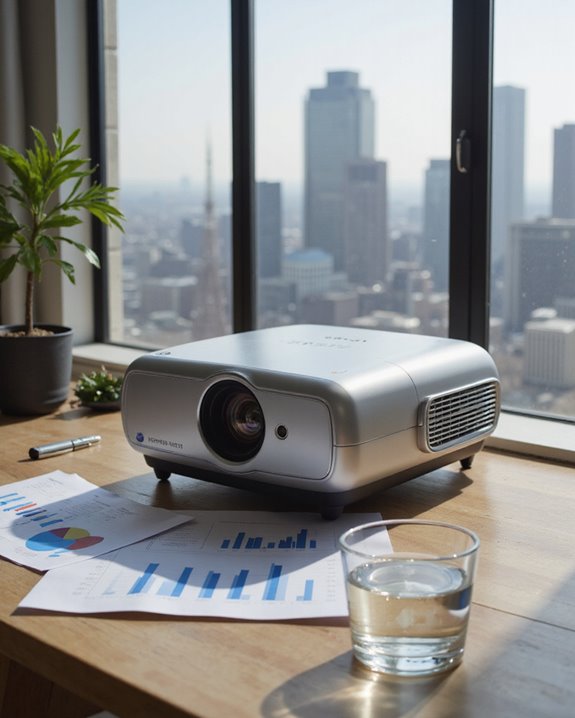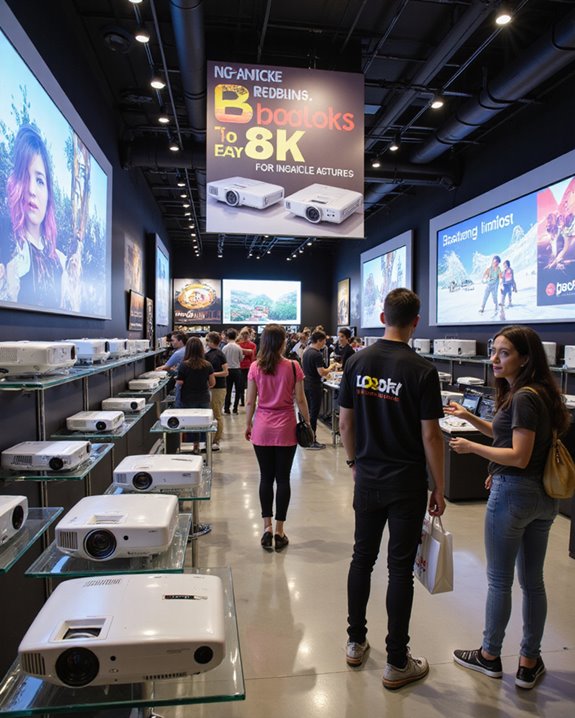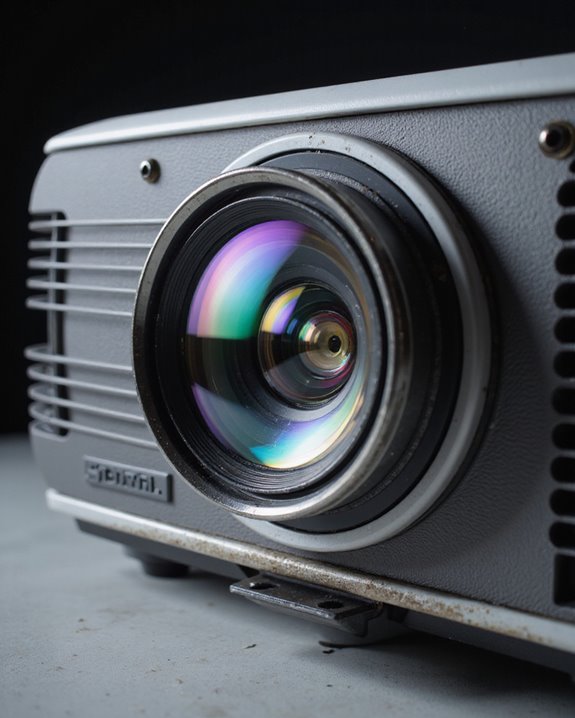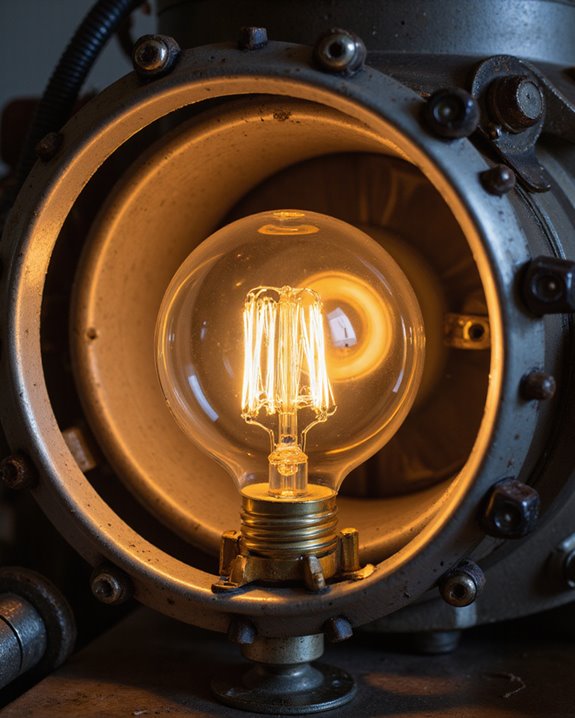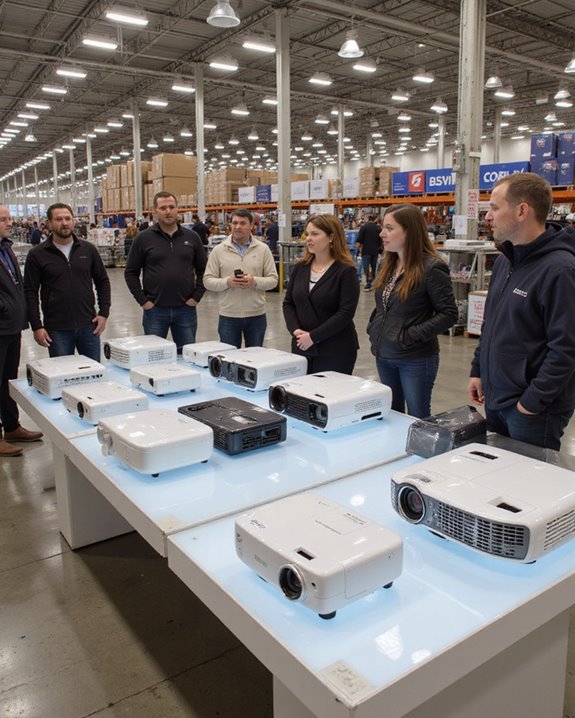Projector prices are expected to decrease over the next five years due to significant market growth and technological advances. The market’s expansion from $11.1B in 2024 to $14.53B by 2029 is driving increased competition and manufacturing efficiencies. New LED and laser technologies are reducing production costs while improving durability and performance. The combination of market competition, improved manufacturing, and innovative technologies suggests consumers will find more affordable options in the coming years. Understanding these key factors reveals the full scope of future price reductions.
Key Takeaways
- Market growth from $11.1B to $11.78B in 2025 drives increased competition and lower prices across projector segments.
- Technological advancements in LED and laser projection reduce manufacturing costs and extend product lifespans significantly.
- Growing demand for home entertainment increases mass production, leading to economies of scale and decreased prices.
- Supply chain improvements and automated manufacturing processes continue to lower production costs and retail prices.
- Industry forecasts indicate sustained price reductions supported by declining raw material costs and operational efficiencies.
Current Market Trends Shaping Projector Prices
The global projector market is undergoing significant price transformations, driven by robust market growth and increasing competition among manufacturers. With the market expected to grow from $11.1 billion in 2024 to $11.78 billion in 2025, consumers are likely to see more competitive pricing options across different segments. The emerging trend toward laser and LED tech is reshaping manufacturing costs and retail pricing structures. Additionally, advancements in affordable projection technology are making high-quality projectors more accessible to a broader audience. Market analysis indicates that traditional brand loyalty is being challenged as new manufacturers enter the space, forcing established companies to adjust their pricing strategies. Consumer expectations are evolving beyond basic projection capabilities, demanding advanced features at more accessible price points. The market’s 6.1% compound annual growth rate (CAGR) suggests a healthy competitive environment that could lead to price reductions. Different segments, including home entertainment, education, and corporate sectors, are experiencing varying levels of price pressure, with the education sector showing particularly strong potential for cost optimization.
Technological Innovations Driving Cost Reductions

Technological breakthroughs in projection systems have revolutionized manufacturing costs across the industry, leading to significant price reductions for consumers. The introduction of laser projection technology has dramatically reduced prices from $327,000 to $38,000, while simultaneously improving projection lifespan and color accuracy. These systems deliver superior picture quality through enhanced color reproduction and higher contrast ratios. Additionally, the adoption of LED and laser light sources has contributed to the decreased costs and increased durability of modern projectors. SmartEco technology represents another significant advancement, combining laser and LED lighting with intelligent power management. This innovation extends operational life to 30,000 hours, five times longer than traditional projectors. The system’s specialized chips analyze content frame-by-frame, optimizing power consumption for each color while maintaining image quality. These developments benefit consumers through:
- Lower maintenance costs with field-replaceable components
- Reduced electricity consumption, up to 33% less than conventional models
- Elimination of mercury lamps, supporting environmental sustainability
- Enhanced system efficiency and longevity
Economic Factors Influencing Projector Affordability
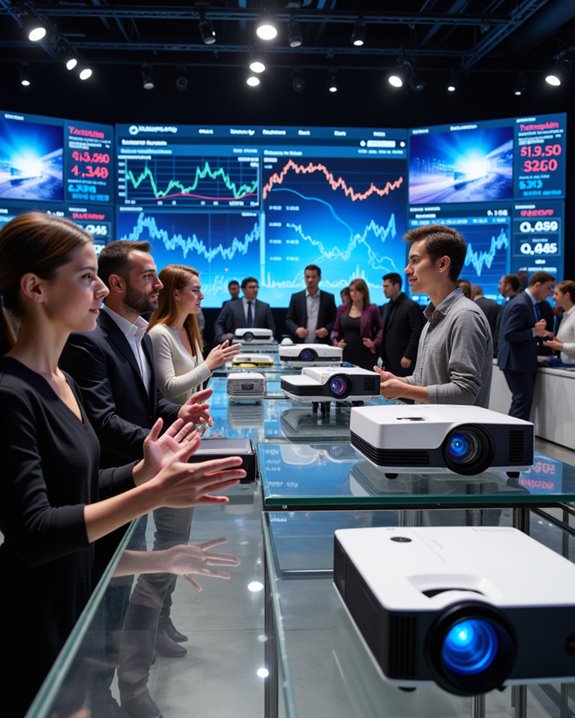
Beyond technological advancements, multiple economic factors continue to drive projector prices lower in today’s market. The global projector market’s expected growth to $11.78 billion in 2025 is creating increased competition, forcing manufacturers to reduce prices to maintain market share. Consumer behavior trends, particularly the rising demand for home entertainment systems, are encouraging mass production and economies of scale. The adoption of more cost-effective display technologies like LED and laser components further contributes to decreasing prices. Regulatory policies, including environmental regulations and trade agreements, are also influencing affordability. The declining costs of LED and laser components, combined with more efficient supply chains, are enabling manufacturers to reduce production expenses. Market forecasts indicate continued downward pressure on prices, especially as raw material costs decrease through technological substitution and improved recycling practices. The North American market’s 2.5% CAGR through 2031 suggests sustained competitive pricing pressure as manufacturers vie for market share. Additionally, government initiatives supporting educational technology adoption are helping stabilize demand and encourage competitive pricing.
Regional Market Dynamics and Price Variations
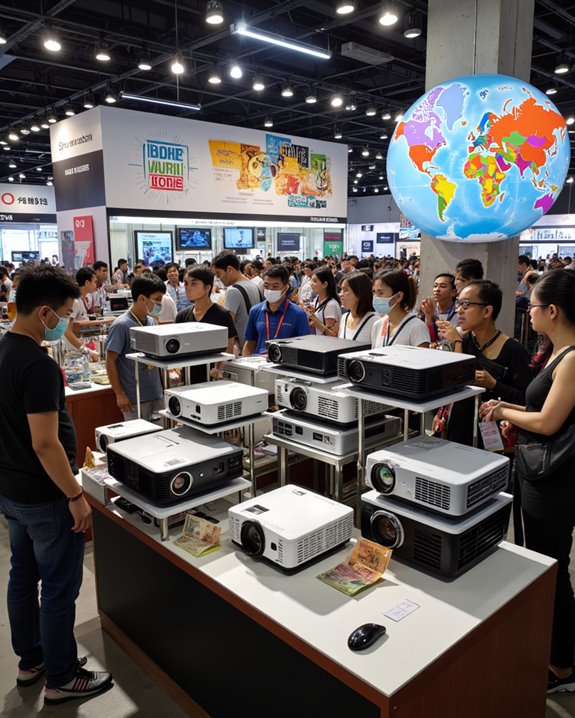
Market dynamics across different regions demonstrate significant variations in projector pricing, reflecting diverse economic conditions and consumer demands worldwide. Regional demand patterns show notable differences, with North America maintaining a strong market position and a projected growth rate of 7.65% through 2034.
Price disparities between regions are influenced by several key factors:
- Local adoption rates of different projector technologies
- Education and corporate sector purchasing volumes
- Regional competition among manufacturers
- Technological preferences in specific markets
The global projector market’s expansion from $11.1 billion in 2024 to an expected $14.53 billion by 2029 indicates growing accessibility across regions. Interactive projectors, in particular, show strong regional variations in pricing, driven by educational institution demand and corporate bulk purchases, which often lead to more competitive pricing in areas with higher adoption rates. The incorporation of advanced LED technology is becoming increasingly prevalent, as demonstrated by ViewSonic’s 2022 launch of enhanced brightness LED projectors.
Supply Chain Evolution and Manufacturing Efficiency
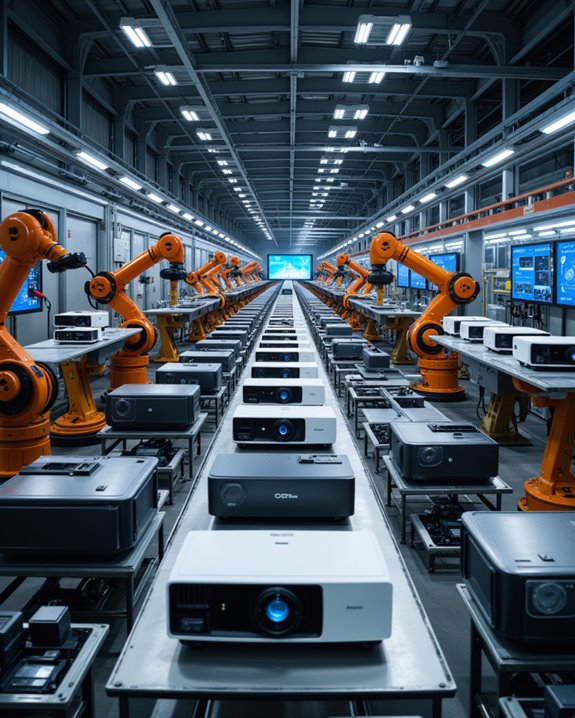
The evolution of projector supply chains has undergone significant transformation in recent years, leading to substantial cost reductions across the industry. Manufacturers are implementing digital inventory systems and diversifying their component suppliers, which helps prevent shortages and reduces overall expenses.
Manufacturing efficiency has improved through several key developments. Companies now use automated production lines and standardized components across different models, cutting down on production costs. Lean manufacturing practices eliminate waste and optimize resource usage, while improved manufacturing techniques reduce production time. These changes make it possible to produce more units at a lower cost per device.
The combination of streamlined supply chains and enhanced manufacturing processes suggests that projector prices will continue to decrease as companies achieve greater operational efficiency. The Less than 4999 Lumens segment’s market dominance indicates a strong consumer preference for more affordable projector options.
Frequently Asked Questions
How Long Do Modern Projectors Typically Last Before Needing Replacement?
Like a trustworthy lighthouse, modern projectors illuminate reliably for extended periods. The typical projector lifespan ranges from 5-10 years, with LED and laser models offering replacement timelines of up to 20,000-30,000 hours.
Can Outdoor Projectors Be Used Effectively During Daylight Hours?
Modern outdoor projectors can function during daylight with proper setup. High-lumen units paired with ambient lighting rejection screens enhance daytime visibility. Ideal placement in shaded areas and specialized settings maximize performance effectiveness.
Which Projector Brands Offer the Best Warranty Coverage?
With up to 5-year coverage available, NEC and BenQ lead in warranty protection. NEC offers extensive coverage on high-end models, while BenQ’s consistent three-year warranty across all models enhances their brand reputation.
Do Projectors Consume More Electricity Than Traditional Television Screens?
Energy consumption varies markedly between projectors and TVs. While some projectors use more power (up to 800W) than typical TVs (80-400W), modern LED projectors can have lower environmental impact when operated with energy-efficient settings.
What Maintenance Costs Should Be Expected With Different Types of Projectors?
Traditional lamp projectors require regular lamp replacement ($100-$400) and filter cleaning. Laser/LED projectors have minimal maintenance costs with 20,000+ hour lifespans, though occasional servicing of cooling components may be necessary.

